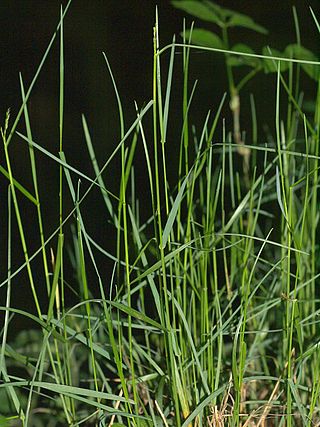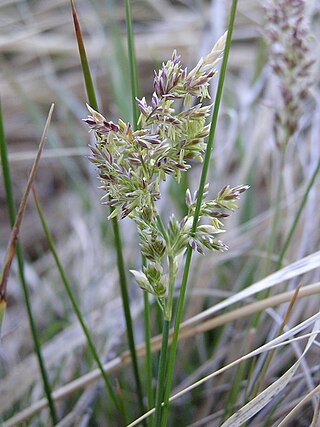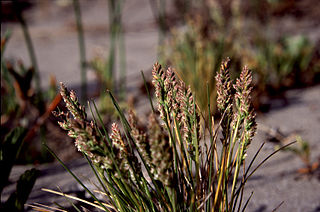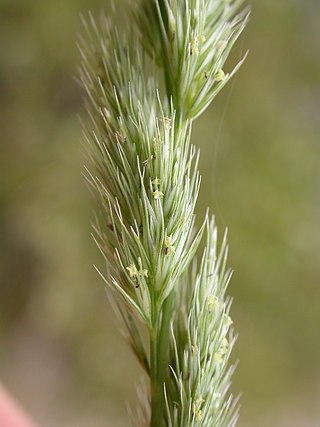
A marsh is — according to ecological definitions — a wetland that is dominated by herbaceous rather than woody plant species. More in general, the word can be used for any low-lying and seasonally waterlogged terrain. In Europe and in agricultural literature low-lying meadows that require draining and embanked polderlands are also referred to as marshes or marshland.

The genus Parnassia, also known as grass of Parnassus or bog-stars, are plants now placed in the family Celastraceae, formerly classified in Parnassiaceae or Saxifragaceae. The plants occur in arctic and alpine habitats, as well as in dune systems and fens, swamps, wet meadows, open seepage areas, moist woods, and across the Northern Hemisphere. It is actually not a grass, but an herbaceous dicot. The stalk of the plant can reach up to 200 millimeters (8 in), the leaves up to 100 mm (4 in) and the petals can be up to 36 mm (1.4 in) wide. The flower has five white petals with light green venation. There are five three-pronged sterile stamens, each tipped with drop-like false nectaries, which attract pollinating flies and bees.

Poa is a genus of about 570 species of grasses, native to the temperate regions of both hemispheres. Common names include meadow-grass, bluegrass, tussock, and speargrass. Poa is Greek for 'fodder'. Poa are members of the subfamily Pooideae of the family Poaceae.

Poa nemoralis, the wood bluegrass, is a perennial plant in the family Poaceae. The late-growing grass is fairly nutritious for livestock, which feed on it in the autumn, and it is used as a lawn grass for shady situations.

Arenaria paludicola is a species of flowering plant in the family Caryophyllaceae known by the common names marsh sandwort and swamp sandwort. The plant grows in wet areas, such as marsh and bog.

Poa atropurpurea is a rare species of grass known by the common name San Bernardino bluegrass. It is endemic to southern California, where it is known from two regions, the San Bernardino Mountains near Big Bear and the Laguna Mountains of San Diego County.

Poa bigelovii is a species of grass known by the common name Bigelow's bluegrass. It is native to the southwestern United States and northwestern Mexico, where it grows in shady spots in desert and plateau habitat.

Poa bulbosa is a species of grass known by the common names bulbous bluegrass or bulbous meadow-grass. It is native to Eurasia and North Africa, but it is present practically worldwide as an introduced species. It is widespread in the United States and southern Canada. It was introduced to the eastern United States around 1906 and the western US in 1915 as a contaminant in shipments of alfalfa seed. It was intentionally planted on both the east and west coasts to control weeds and prevent erosion. Today it is a common grass across the continent and is a noxious weed in some areas. It is a sturdy, hardy, persistent, aggressive grass that easily outcompetes many other plants and becomes the dominant species in disturbed habitat types, such as overgrazed fields.

Poa confinis is a species of grass known by the common names coastline bluegrass and beach bluegrass. It is native to the coastline of western North America from British Columbia to northern California, where it grows on beaches, dunes, and other coastal habitat.

Poa glauca is a species of grass known by the common names glaucous bluegrass, glaucous meadow-grass and white bluegrass. It has a circumboreal distribution, occurring throughout the northern regions of the Northern Hemisphere. It is also known from Patagonia. It is a common grass, occurring in Arctic and alpine climates and other areas. It can be found throughout the Canadian Arctic Archipelago in many types of habitat, including disturbed and barren areas.

Poa leptocoma is a species of grass known by the common names marsh bluegrass and western bog bluegrass.

Poa macrantha is a species of grass known by the common names seashore bluegrass and large-flowered sand dune bluegrass. It is native to the west coast of North America from Alaska to northern California, where it grows in sand dunes and other beach habitat.

Poa unilateralis is a species of grass known by the common names San Francisco bluegrass, ocean-bluff bluegrass, and sea-bluff bluegrass.

Muhlenbergia glomerata is a species of grass known as spiked muhly and marsh muhly. It is native to North America, where it occurs across Canada and the northern half of the United States.

Muhlenbergia racemosa is a species of grass known by the common names green muhly and marsh muhly. It is native to North America, where it is most common in the north-central United States. It also occurs in the western United States and northern Mexico.

Panicum hemitomon is a species of grass known by the common name maidencane. It is native to North America, where it occurs along the southeastern coastline from New Jersey to Texas. It is also present in South America.

Poa arida is a species of grass known by the common names plains bluegrass and prairie speargrass. It is native to North America, where it occurs throughout western and central Canada and the central United States. It is most common east of the Continental Divide; specimens west are often misidentifications.

Sporobolus spartinae is a species of grass known by the common names gulf cordgrass and sacahuista. It is native to the Americas, where it occurs from the Gulf Coast of the United States south to Argentina.

Carex lacustris, known as lake sedge, is a tufted grass-like perennial of the sedge family (Cyperaceae), native to southern Canada and the northern United States. C. lacustris us an herbaceous surface-piercing plant that grows in water up to 50 cm (1.6 ft) deep, and grows 50–150 cm (1.6–4.9 ft) tall. It grows well in marshes and swampy woods of the boreal forest, along river and lake shores, in ditches, marshes, swamps, and other wetland habitat. It grows on muck, sedge peat, wet sand or silt, in filtered or full sunlight.

Symphyotrichum racemosum is a species of flowering plant native to parts of the United States and introduced in Canada. It is known as smooth white oldfield aster and small white aster. It is a perennial, herbaceous plant in the family Asteraceae. It is a late-summer and fall blooming flower.





















